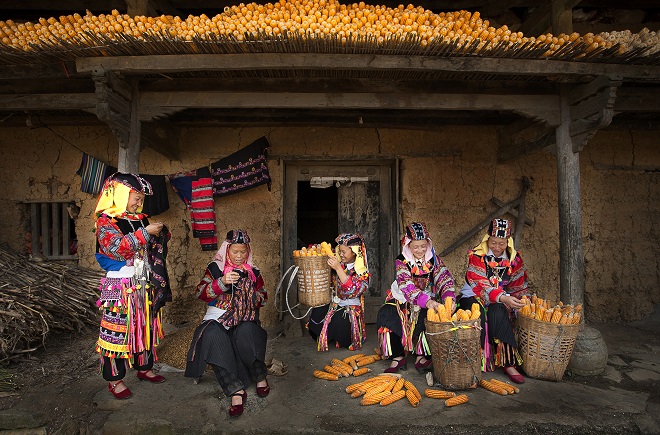Whoever has set foot in the Northwest can hardly take their eyes of eye catching ethnic fabric items created out of refined graphics and handmade weaving techniques. The fabrics are also the favorite souvenirs among visitors in addition to exotic and vernacular culture of the highlands.

Lo Lo women in Ha Giang. Photo: Nguyen Huu Thong
Ethnic fabrics are the quintessential token of the Northwest, which are totally menially undertaken by ethnic minorities. Northwestern communities deploy wild plants to create their white, yellow, purple, red and green hues as the highlights on their tapestry of ethnic fabrics. Fabric scrolls are draped in decorative embroidery of different patterns such as helix, squash bines, rhombic items, pine trees, bronze drums or birds and animals... that deliver meaningful messages of the ordinary life in their communities. From these ethnic tapestries, the natives create their wallets, bags, scarves, decorative handkerchiefs or caps…
A closer look at the heartland of the Northwest unveils varying differences of ethnic fabrics in different ethnic minorities. Given over 30 types of decorative patterns, the fabric of the Thai is comparable to the impeccable portrayal of nature. Hmong natives deploy flax bark to weave their fabrics, not to mention their peculiar embroidery, sketching and wax printing techniques. Meanwhile, the tapestries of the Muong are highly recognizable and diverse with repetitive decorative patterns of bronze drums. With the same technique that involves flax to make ethnic fabric of the Hmong, the products of Dao people are particularly centered on patterns of birds, animals, plants and flowers.
To visually explore the Northwest through an insightful survey of their native traditions, to climb up high mountains, relish their exotic foods or join the ordinary life in native hamlets… is even more fulfilling with some little souvenirs of ethnic fabric to bring home for your families and friends, particularly to keep fond memories of the far-off uplands.
Quoc Dung